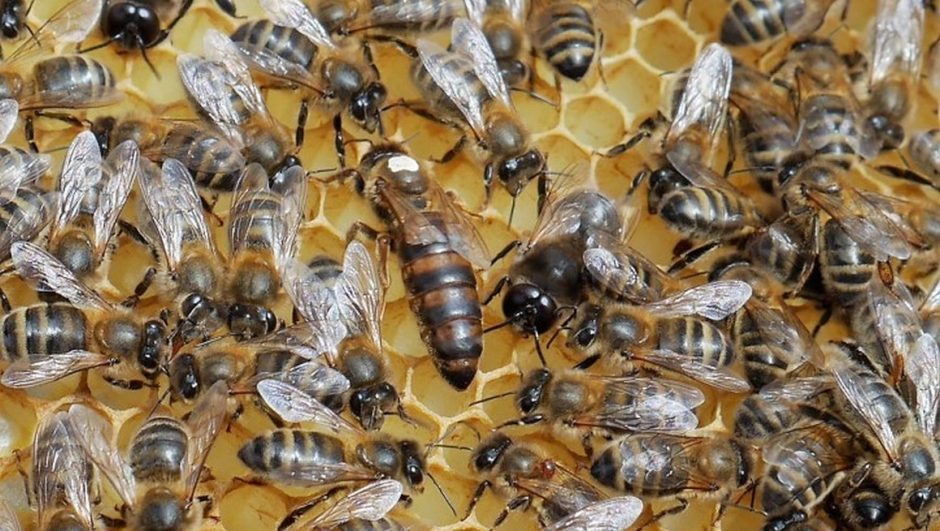Scotland’s native honey bee, Apis mellifera mellifera, is at serious risk of disappearing by being genetically swamped by cross-breeding with the non-native types now found across the country, rather like our native wildcat. Over many millennia, this honey bee adapted to our changeable and often windy climate on the Western fringes of Europe. These bees are often said to be stocky, dark, frugal and with particularly hairy backsides! All these traits can be useful to an insect needing to forage, survive and even mate in our cool, windy climate.
Why is there a problem?
The renewed interest in beekeeping has created a strong demand for stocks of honey bees. The wide availability of non-native and imported stocks has taken such bees to almost every corner of Scotland, jeopardising remaining pockets of pure native honey bees. Although the trade in non-native honey bees has continued for over a hundred years, in recent years this has accelerated and penetrated new areas. In addition, commercial bee farming, using bees mainly bred for productivity, has expanded in terms of territory and numbers of stocks held. These bees are Carniolans, Buckfast, other non-indigenous types and their hybrids and further erode the status of the native honey bee where they are taken. In addition to the loss of heritage, such mixing often yields very bad-tempered and hard to manage stocks.
Like other types of honey bee, pure native honey bees can be selected to be gentle, productive and an absolute pleasure for beekeepers to handle.
Our native honey bee has a number of characteristics which make it ideally suited to our climate:
- A larger body size than its mainland European counterparts with long hairs, noticeable on the abdomen
- A characteristic wing structure that may better enable flying in windy conditions
- It flies at lower temperatures than bees from warmer climates which is just as well as honey bees mate in flight
- It is frugal in character and stops brood rearing in periods of poor weather and throughout winter, hunkering down in a tight cluster to use its honey stores with great thriftiness
- It tends to collect and store more pollen than bees from other regions thus making sure it always has protein stores available for rearing young when needed
- It takes a cautious approach in Spring, building up its colony size slowly in line with forage availability and is generally in peak condition for the summer and heather crop.
- These traits mean that it is less likely to starve in periods of poor weather or dearth and needs less sugar feed than the commercially traded types
Where are we now?
- The Hebridean islands of Colonsay and Oronsay have one of the few pure and isolated populations of our native honey bee in Europe. Established during the 1970s and 80s from mainland Scottish stocks, their importance to genetic conservation was recognised by the Scottish Government when they passed The Beekeeping (Colonsay and Oronsay) Order 2013. This prevents other bees being brought onto the island.
- There are native stocks on Orkney but as yet they have not been awarded any protection so unfortunately could be lost if more non-native stocks are brought onto the island. We would like to see Orkney awarded the same status as Colonsay.
- Breeding groups on the mainland of Scotland are now trying to establish pockets of native bees on land away from other beekeepers. This is incredibly challenging as bees mate in flight and there is a need for several miles isolation for pure mating. By establishing these remote sites SNHBS hope to be able to offer native stocks to many more beekeepers.
Want to help?
- If you are a beekeeper we would always urge you to buy local stocks of bees and queens.
- Careful consideration should always be given when moving stocks of bees in case breeding groups are working in an area or the local beekeepers have native stocks.
- Landowners should be cautious about which beekeepers they allow on their land.
We are always keen to welcome new members with a passion to help conserve our native honey bees.

